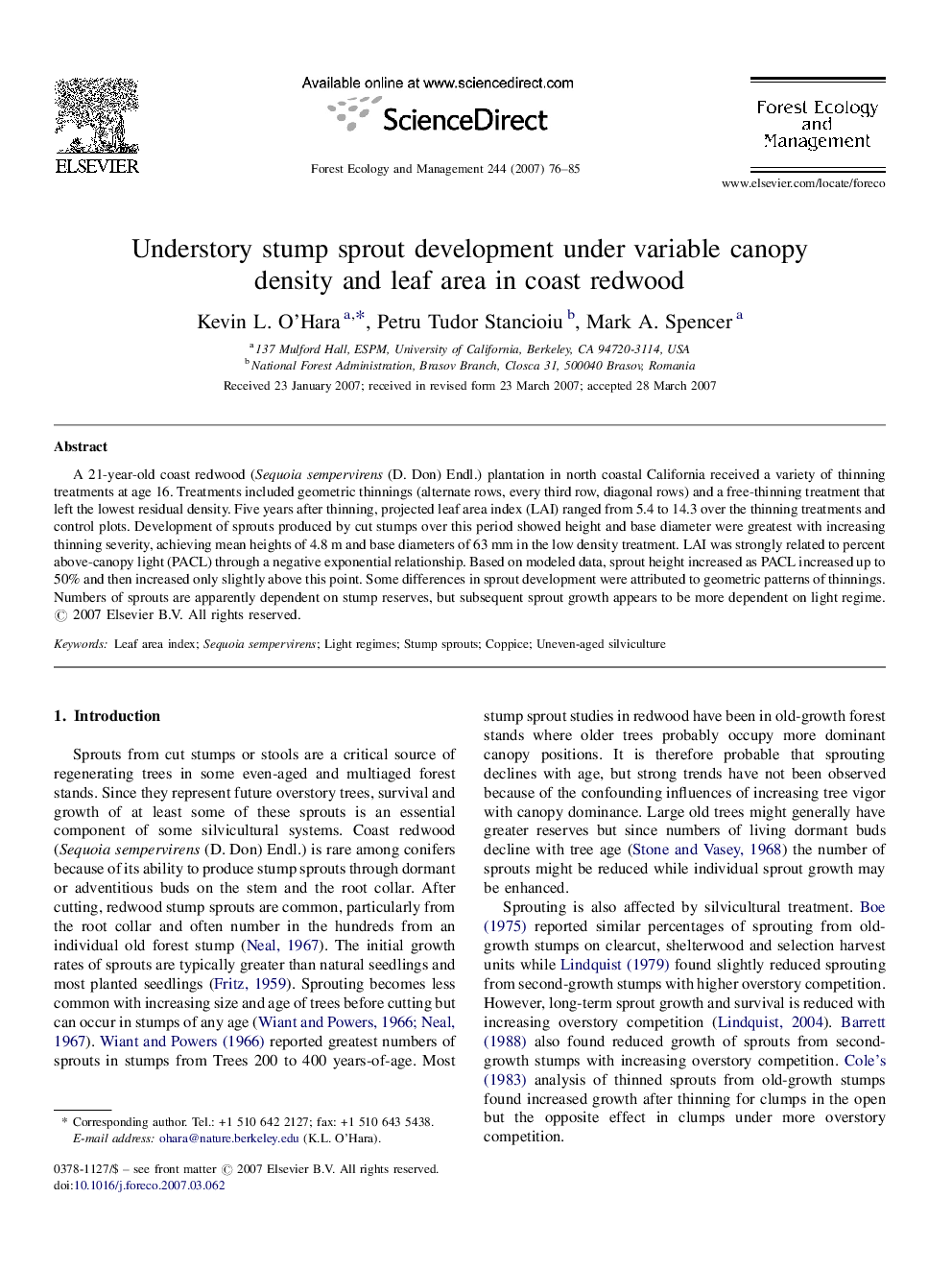| Article ID | Journal | Published Year | Pages | File Type |
|---|---|---|---|---|
| 89765 | Forest Ecology and Management | 2007 | 10 Pages |
A 21-year-old coast redwood (Sequoia sempervirens (D. Don) Endl.) plantation in north coastal California received a variety of thinning treatments at age 16. Treatments included geometric thinnings (alternate rows, every third row, diagonal rows) and a free-thinning treatment that left the lowest residual density. Five years after thinning, projected leaf area index (LAI) ranged from 5.4 to 14.3 over the thinning treatments and control plots. Development of sprouts produced by cut stumps over this period showed height and base diameter were greatest with increasing thinning severity, achieving mean heights of 4.8 m and base diameters of 63 mm in the low density treatment. LAI was strongly related to percent above-canopy light (PACL) through a negative exponential relationship. Based on modeled data, sprout height increased as PACL increased up to 50% and then increased only slightly above this point. Some differences in sprout development were attributed to geometric patterns of thinnings. Numbers of sprouts are apparently dependent on stump reserves, but subsequent sprout growth appears to be more dependent on light regime.
